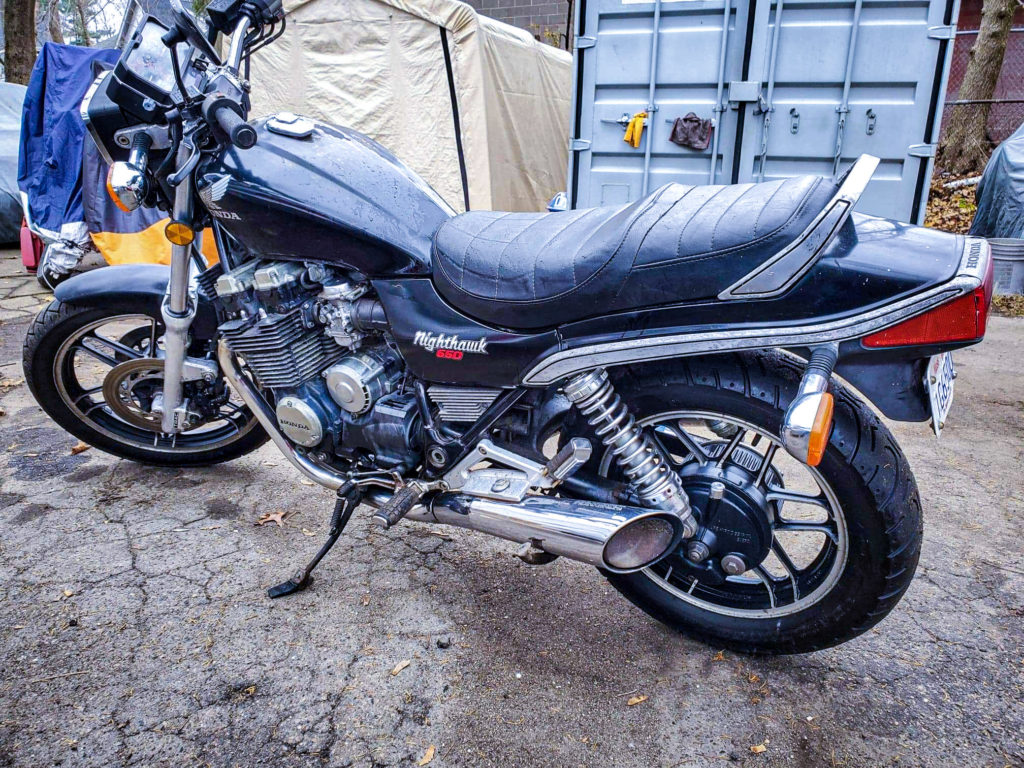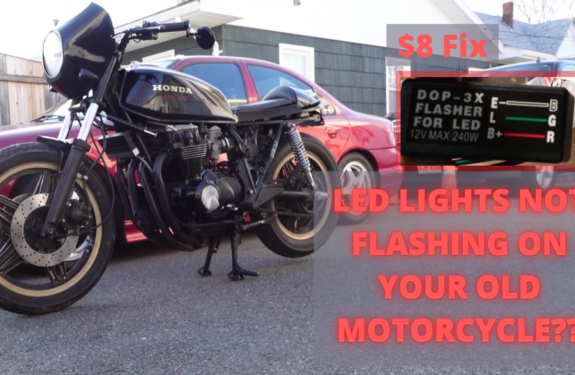You’ve just learned how to ride, took the required courses, or just obtained your license/permit. Now its time to find a ride. As a beginner it might be tempting to buy a shiny new bike, and if your finances agree, then by all means, go for it! But, if you find yourself hunting for a great deal, a cheap motorcycle or a beginner bike, then this should be of some help to you.
* This guide is intended for beginners or intermediate riders looking for some guidance into the world of motorcycles, any suggestions to add/remove from the content are more than welcome in the comments.

Step 1: Find the appropriate size bike for your height/weight
As tempting as it might be to go pick up that cool Honda CBR1000RR or that sweet new Yamaha R1, it might not be the most sensible thing to do. My piece of advice to you is to find a smaller bike at first, something you can easily plant both feet on the ground while sitting on it. For the average riders between 120-210lbs I would easily recommend a 450-600. Perhaps an older model that will get the job done and not break your heart/wallet when it accidentally tips over when you park it on a downhill slope (most of us have been there).
These smaller bikes sometimes come in big frames to make you used to the handling of a bigger bike without the unnecessary added weight. Once you dominate this you can easily sell it and move up to a bigger bike. The used motorcycle market seems to be expanding every single day so you won’t have a problem selling yours.
Try on a few bikes for size, maybe at a dealership. Some independent sellers might even let you try theirs on. But always be cautious when going to see a bike from an independent seller, and bring an experienced rider or mechanic along with you to inspect the bike.
Step 2: Know your budget
Always leave some extra wiggle room for your gear and other miscellaneous expenses. Protective gear is the last place you want to spare any expenses. Sometimes it’s best to shell out the extra cash on some nice gear, as it could end up saving your life.
Depending on the region where you are, even within the same country prices will differ greatly. So only YOU know what works for you and what your budget is. If you are in the Northeast US, a fairly decent beginner bike can be had for under $1000. Even slight cosmetic imperfections can be fixed up with a couple simple techniques.
(Posts on tips coming soon)
Before looking at a used motorcycle, you MUST first find out the requirements for registering a motorcycle in your State/Region. In the US, some states require a title signed by the previous owner, some require a bill of sale (even if its on a napkin), and some require both as well as a notarized bill of sale. Before purchasing anything, please research.
*If you are a Massachusetts resident you only require a title OR if the bike is from out of state you only need a bill of sale and previous registration.

Step 3: Begin the Hunt!
The best places to begin your search are Craigslist, and FB Marketplace, but there are plenty of other sites where you might be able to find a great motorcycle for cheap (eBay, OfferUp, etc).
The best way for searching on these sites is to go to the motorcycle category and set your price cap. There are plenty of used motorcycles out there but the right one might be some miles away. I do not recommend riding a new (to you) bike back home no matter where you buy it from. This could leave you stranded waiting for a tow or could even be dangerous if the previous owner assembled anything incorrectly.
The best way to get it home is to get a friend and get yourself a ramp and a truck, or trailer (or rent one). This way you can take the bike home and check your fluids, your pressures and make sure the bike is ready to ride!
Once you find a way to pick up any bike you might find, its time to search for that bike!
Step 4: Inspect!
Take precautions when buying anything off someone on the internet, meet at a safe location and if possible, meet when the sun’s out.
So you found the right bike for and set up a time/date to go see it, you borrowed your friend and his/her truck and drove over, what’s next? I can make a whole post just about this step, but to keep it short:
You will need to inspect the following:
- Does the bike start? If not, can it be jump started?
- Bike does not start on its own, but can be jump started, you will need a new battery.
- Bike does not start at all, there might be a list of things to check (refer here)
- Does the engine sound healthy? Is there smoke coming out the back? Any knocking/rattling noises coming from the engine?
- Smoke can mean the piston rings are starting to go, knocking or rattling noises coming from inside the engine can be any variety of mechanical issues, which all mean the same: Added costs.
- Are there any leaks along the cylinders, valve covers, or underside of the bike?
- These can mean added costs, a bad valve cover gasket, or cases could be leaking from the underside.
- Any visibly broken engine, frame, or other components?
- This could mean the bike was crashed or “dumped” which could signify more damage which is not visible.
- Is the oil a milky color? Is there any black oil in the exhaust if you stick your finger in it? (make sure it’s not hot)
- This could be an indication of water in the oil if it is a milky color (perhaps a blown head gasket in water cooled bikes)
- If there is black sludge/oil in the exhaust: the bike might be burning oil, high added cost to repair this.
- If the bike runs, are there any major gas leaks or drips?
- Check the carburetors, if it’s coming from here then it could be costly but not too difficult to fix
- If the bike runs, check all of the gears and the clutch.
- Confirm the seller has the necessary paperwork.
If you are not mechanically inclined, or never worked on bikes before, it might be best to move on after seeing any of these on your first potential bike. But if you are committed to the project, shoot an offer as these are all valid price haggling points. Remember, we are trying to keep it cheap! Don’t get carried away by emotion, if it’s too big of a project, move on!
If the bike passed the previous checklist, check for these next items which are minor fixes but can help you negotiate a better price. These all should be fixed before riding:
Second Checklist:
- Any leak or slight wet spots in the front suspension
- Dry rotted tires or tires with cracks in them or flat tires
- Worn chain and sprockets
- Worn oil
- Leaking gas tank or pet cock (gas shutoff valve)
- Leaking carburetors
- Dying battery
- Loose bolts, loose wheels, and missing plastics/panels
- Worn suspension
- Life of brakes/functioning brakes
- Working lights and turn signals/horn
- Rust in important areas of the bike
- Deep scrapes and scratches, bike could have been dropped
- Broken components, minor stuff
- Old fluids (oil, coolant, gas) REPLACE THEM!
If these all check out, then congratulations on your purchase! Secure it down properly on your truck or trailer, and bring it home! Go through your checklist and see you on the road!
Once its time to start enhancing your bike, its time to check out our other guides!
Check out our other posts for a list of our top recommended beginner bikes!

